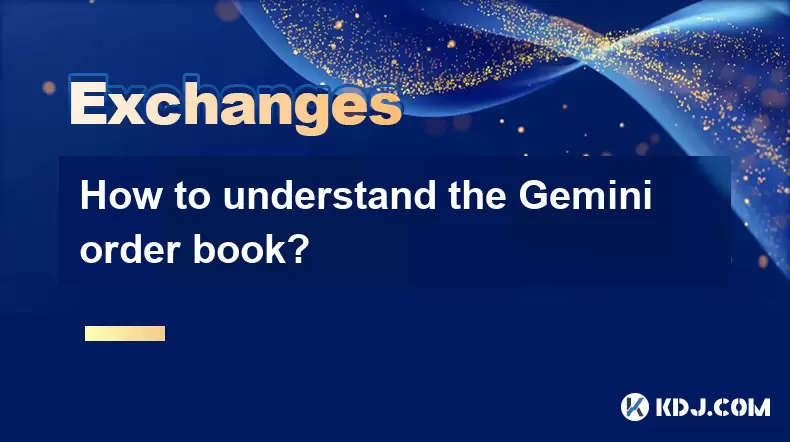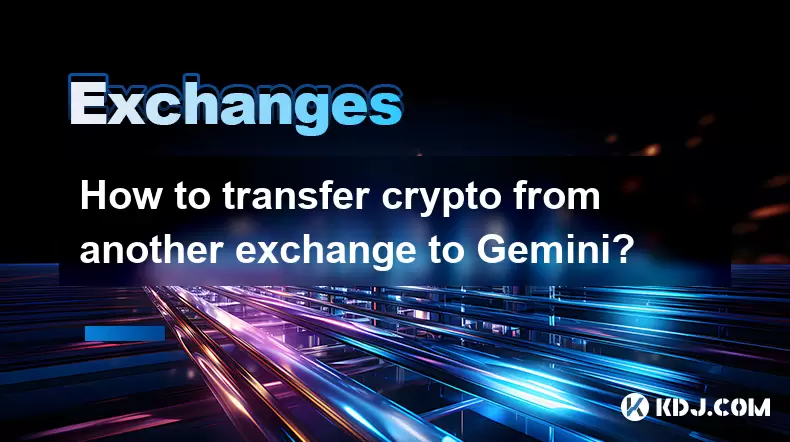-
 Bitcoin
Bitcoin $112400
-1.07% -
 Ethereum
Ethereum $3409
-3.27% -
 XRP
XRP $2.784
-6.60% -
 Tether USDt
Tether USDt $0.9997
-0.03% -
 BNB
BNB $739.3
-2.09% -
 Solana
Solana $158.0
-2.90% -
 USDC
USDC $0.9998
-0.02% -
 TRON
TRON $0.3213
-0.94% -
 Dogecoin
Dogecoin $0.1929
-5.01% -
 Cardano
Cardano $0.6974
-2.82% -
 Hyperliquid
Hyperliquid $36.69
-2.31% -
 Sui
Sui $3.327
-4.80% -
 Stellar
Stellar $0.3672
-5.18% -
 Chainlink
Chainlink $15.65
-3.07% -
 Bitcoin Cash
Bitcoin Cash $525.0
-1.68% -
 Hedera
Hedera $0.2291
-6.00% -
 Avalanche
Avalanche $20.91
-2.96% -
 Ethena USDe
Ethena USDe $1.000
0.00% -
 Toncoin
Toncoin $3.520
-1.12% -
 UNUS SED LEO
UNUS SED LEO $8.968
0.14% -
 Litecoin
Litecoin $105.7
0.26% -
 Shiba Inu
Shiba Inu $0.00001181
-1.79% -
 Polkadot
Polkadot $3.492
-2.08% -
 Uniswap
Uniswap $8.800
-3.10% -
 Dai
Dai $0.9999
-0.01% -
 Monero
Monero $289.9
-3.17% -
 Bitget Token
Bitget Token $4.243
-1.27% -
 Pepe
Pepe $0.00001006
-3.67% -
 Cronos
Cronos $0.1248
-5.68% -
 Aave
Aave $249.7
-2.50%
What is Binance Launchpool?
Binance Launchpool lets users earn new tokens by staking assets like BNB or BUSD, offering early access to promising projects with low entry barriers and passive income potential.
Jul 03, 2025 at 10:14 pm

Understanding Binance Launchpool
Binance Launchpool is a feature offered by Binance, one of the world’s largest cryptocurrency exchanges, designed to allow users to earn newly launched tokens by staking their existing crypto assets. This platform serves as a bridge between Binance's ecosystem and emerging blockchain projects, enabling users to participate in early-stage token distributions without the need for direct purchases or complicated participation mechanisms.
Unlike traditional yield farming or liquidity provision methods, Binance Launchpool simplifies the process by offering a structured and secure environment where users can stake BNB, BUSD, or other supported tokens to earn rewards from new projects. These rewards typically come in the form of newly issued tokens, which may later be traded on the Binance exchange itself.
How Does Binance Launchpool Work?
The operation of Binance Launchpool is built around a reward distribution system that is transparent and time-bound. When a new project partners with Binance for a launch, it deposits a certain amount of its native token into the pool. In return, Binance allocates these tokens to users who stake their funds in specific pools over a defined period.
Here’s how it works:
- Users select a pool based on the staking asset (e.g., BNB, BUSD, or another supported coin).
- They then deposit the required amount of the asset into the pool.
- Rewards are distributed daily or hourly based on the total staked amount and individual contributions.
- Once the staking period ends, users can claim their earned tokens.
It’s important to note that the more you stake and the earlier you join, the higher your share of the reward pool will be.
Benefits of Participating in Binance Launchpool
Participating in Binance Launchpool offers several advantages, especially for those interested in early access to promising blockchain projects.
- Early Token Access: Users can obtain tokens before they’re listed publicly, often at favorable rates compared to market prices post-launch.
- Low Entry Barriers: Unlike private sales or venture capital rounds, anyone with the necessary staking assets can join.
- Passive Income Generation: Staking in Launchpools doesn’t require active trading or complex strategies — simply locking up assets earns tokens automatically.
- Security and Trust: Since Binance vets all projects on Launchpool, participants benefit from an added layer of trust and reduced risk of scams.
These benefits make Binance Launchpool an attractive option for both novice and experienced crypto investors.
Step-by-Step Guide to Joining a Binance Launchpool
To get started with Binance Launchpool, follow this detailed guide:
- Ensure you have a verified Binance account.
- Deposit supported assets like BNB or BUSD into your Binance wallet.
- Navigate to the Launchpool section on the Binance website or app.
- Review current and upcoming pools, including details about the project and estimated APR.
- Select a pool and click on “Stake”.
- Enter the amount you wish to stake and confirm the transaction.
- Monitor your earnings via the dashboard, and claim your rewards once the staking period ends.
This process ensures that users can seamlessly engage with new projects while minimizing risks and maximizing potential gains.
Key Considerations Before Staking in Launchpool
While Binance Launchpool provides opportunities for earning new tokens, there are several factors to consider before participating:
- Token Volatility: Newly launched tokens can experience significant price fluctuations after listing. Be prepared for potential losses if the token underperforms.
- Lock-up Periods: Some pools may impose lock-up periods during which you cannot unstake your assets.
- Reward Claim Deadlines: Failing to claim your rewards within the specified timeframe might result in forfeiting them.
- Project Research: Even though Binance screens projects, conducting independent research on the team, use case, and roadmap is advisable.
By keeping these points in mind, users can better manage their exposure and expectations when engaging with Binance Launchpool.
Frequently Asked Questions (FAQs)
Q: Can I unstake my assets anytime in Binance Launchpool?
A: Most pools allow flexible staking, but some may include fixed-term options. Always check the pool details before staking.
Q: Are the tokens earned from Launchpool immediately tradable?
A: No, tokens are usually claimable before listing. You must wait until the official trading date set by Binance to trade them.
Q: Is there a minimum staking amount for Binance Launchpool?
A: Yes, each pool sets a minimum requirement, which varies depending on the staking asset and project rules.
Q: How are rewards calculated in Binance Launchpool?
A: Rewards are calculated based on your proportion of the total staked amount in the pool and the duration of your stake.
Disclaimer:info@kdj.com
The information provided is not trading advice. kdj.com does not assume any responsibility for any investments made based on the information provided in this article. Cryptocurrencies are highly volatile and it is highly recommended that you invest with caution after thorough research!
If you believe that the content used on this website infringes your copyright, please contact us immediately (info@kdj.com) and we will delete it promptly.
- BlockDAG, SEI, Ethena: Top Crypto Performers Under the Microscope
- 2025-08-03 10:50:16
- Bitcoin Blasts Past $119K: How Institutional Adoption and Macro Shifts Fuel the Fire
- 2025-08-03 10:55:16
- Crypto, Grok, and August: Decoding the Latest Trends and Insights
- 2025-08-03 11:10:16
- Crypto, Phishing, and Your Wallet: A New Yorker's Guide to Staying Safe
- 2025-08-03 10:30:16
- Troller Cat Meme Coin Presale Soars: A New King in the Crypto Jungle?
- 2025-08-03 10:30:16
- Grayscale, Altcoin Trust, and Mid-Cap Mania: What's the Deal?
- 2025-08-03 08:50:16
Related knowledge

How to set and manage alerts on the Gemini app?
Aug 03,2025 at 11:00am
Understanding the Gemini App Alert SystemThe Gemini app offers users a powerful way to stay informed about their cryptocurrency holdings, price moveme...

How to manage your portfolio on Gemini?
Aug 03,2025 at 10:36am
Accessing Your Gemini Portfolio DashboardTo begin managing your portfolio on Gemini, you must first log in to your account through the official websit...

How to understand the Gemini order book?
Aug 02,2025 at 03:35pm
What Is the Gemini Order Book?The Gemini order book is a real-time ledger that displays all open buy and sell orders for a specific cryptocurrency tra...

Is Gemini a safe and secure cryptocurrency exchange?
Aug 02,2025 at 10:42pm
Understanding Gemini’s Regulatory ComplianceGemini is a New York State-chartered trust company, which places it under the supervision of the New York ...

How to download your Gemini transaction history for taxes?
Aug 03,2025 at 09:15am
Understanding Gemini Transaction History for Tax PurposesWhen preparing your cryptocurrency tax filings, having a complete and accurate record of all ...

How to transfer crypto from another exchange to Gemini?
Aug 02,2025 at 07:28pm
Understanding the Basics of Crypto Transfers to GeminiTransferring cryptocurrency from another exchange to Gemini involves moving digital assets from ...

How to set and manage alerts on the Gemini app?
Aug 03,2025 at 11:00am
Understanding the Gemini App Alert SystemThe Gemini app offers users a powerful way to stay informed about their cryptocurrency holdings, price moveme...

How to manage your portfolio on Gemini?
Aug 03,2025 at 10:36am
Accessing Your Gemini Portfolio DashboardTo begin managing your portfolio on Gemini, you must first log in to your account through the official websit...

How to understand the Gemini order book?
Aug 02,2025 at 03:35pm
What Is the Gemini Order Book?The Gemini order book is a real-time ledger that displays all open buy and sell orders for a specific cryptocurrency tra...

Is Gemini a safe and secure cryptocurrency exchange?
Aug 02,2025 at 10:42pm
Understanding Gemini’s Regulatory ComplianceGemini is a New York State-chartered trust company, which places it under the supervision of the New York ...

How to download your Gemini transaction history for taxes?
Aug 03,2025 at 09:15am
Understanding Gemini Transaction History for Tax PurposesWhen preparing your cryptocurrency tax filings, having a complete and accurate record of all ...

How to transfer crypto from another exchange to Gemini?
Aug 02,2025 at 07:28pm
Understanding the Basics of Crypto Transfers to GeminiTransferring cryptocurrency from another exchange to Gemini involves moving digital assets from ...
See all articles

























































































